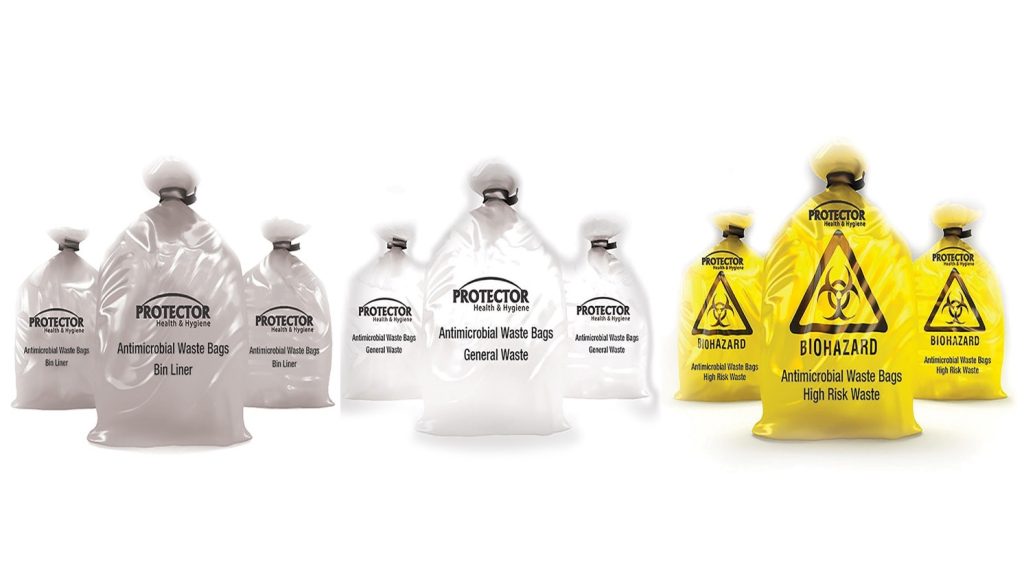
Healthcare waste mishandling issues are worldwide. Waste if not managed poorly can result in outbreak of infectious and noncommunicable diseases. Hospital waste has increased greatly in recent years, particularly hospitals now use more disposable items, such as syringes, cutlery, food trays, bed pans, etc. Hospitals waste can be categorized into medical, cytotoxic and general waste. The medical waste are solid waste produced in tremendous amount which is generated as a result of patient diagnosis, treatment, or immunization of humans or animals, in related research, and this waste is capable of producing infectious diseases.
For more than three decades, healthcare facilities face serious issues in the handling of the medical solid waste. Waste has become potent channel in the spread of multi-drug resistant organisms (MDROs). The MDROs has increased the complexity of disease conditions and requiring multiple procedures because of occurrence of co-morbidities. According to WHO (World Health Organization), the waste produced by hospitals carries a higher potential for infection and injury than any other kind of waste.
In another report of WHO (2000), “Almost 80% of total wastes generated by health-care activities are comparable to domestic waste and can be disposed through regular municipal waste methods. The remaining 20% of wastes are considered hazardous and have been classified into nine categories: infectious waste, pathological waste, sharps, pharmaceutical waste, genotoxic waste, chemical waste, waste with high contents of heavy metals, pressurized containers and radioactive waste.
Unlike the general public, healthcare workers (HCWs) who generate, handle, and process infectious waste have the potential for direct exposure to infectious agents. Mostly HCWs, become carrier for the disease spread by accidental exposure to the contaminations resulting in the spread of Health Associated Infections (HAIs) and illnesses.
Strategies needed to be develop for minimizing infectious disease spread and address the issue of emerging diseases while supporting, general public, healthcare and environmental health. Ineffective handling of medical wastes puts healthcare workers, sanitation workers, patients, and the public at risk for contracting contagious diseases and infectious, later facilitating the propagation of drug resistant organisms, and drives escalating healthcare costs.
Protection against occupationally acquired illness is achieved through appropriate waste handling and treatment methods, which either contain the waste or inactivate the infectious agents. Up-to-date infection control system needed to be implemented that includes modern medical solid waste managing strategies for healthcare facilities can help in restricting drug resistant microorganisms spread, preventing pandemics, and reducing healthcare costs.
The best up-to-date and innovative method to manage and control the spread of infections and diseases include the use of Protector ® Antimicrobial Waste bags. Protector ® Antimicrobial Waste bags are of three categories to help manage the waste properly. Protector® waste bags provide maximum protection against Bacteria, Viruses, Fungi, Algae, Mould, Mildew, Yeast, and Dust.
Protector ® Waste bags conforms to ISO 22196 and ASTM E 2180 for antimicrobial performance and has tested antimicrobial efficacy of 99.99%. The waste bag categories include: General Waste Bag, Cytotoxic Waste Bag and Biohazardous Waste Bag. Apart from waste bags, the Protector ® Antimicrobial bin liners also helps in the reduction of microbes count. The waste bags are of high quality & strength that can bear maximum waste weight with high withholding capacity and has nonporous quality, preventing the leakage of liquid waste.
These waste bags can help minimize the HAIs prevalence with its build-in antimicrobial feature that will kill microorganisms upon contact. Thus, these antimicrobial waste bags are highly recommended at healthcare centers, hospitals, clinics and workers are encouraged to use these bags as they directly handle the waste and are at greater risk of contracting and spreading infections.
Keywords:
Waste bags, Biohazardous Waste Bags, Cytotoxic Waste Bags, General Waste Bags, antimicrobial, healthcare centers, hospitals, clinics, Bacteria, Viruses, Fungi, Algae, Mould, Mildew, Yeast, Dust, liquid waste, solid waste, infectious spread, diseases, prevention.
References:
- Richmond, J.Y. and McKinney, R.W., 1993. Biosafety in microbiological and biomedical laboratories.
- Klangsin, P., 1994. Medical waste treatment techniques used by hospitals in Oregon, Washington, and Idaho.
- Hoornweg, D. and Bhada-Tata, P., 2012. What a waste: a global review of solid waste management (Vol. 15, p. 116). World Bank, Washington, DC.
- Prüss-Üstün, A. and Townend, W.K., 1999. Safe management of wastes from health-care activities. World Health Organization.












